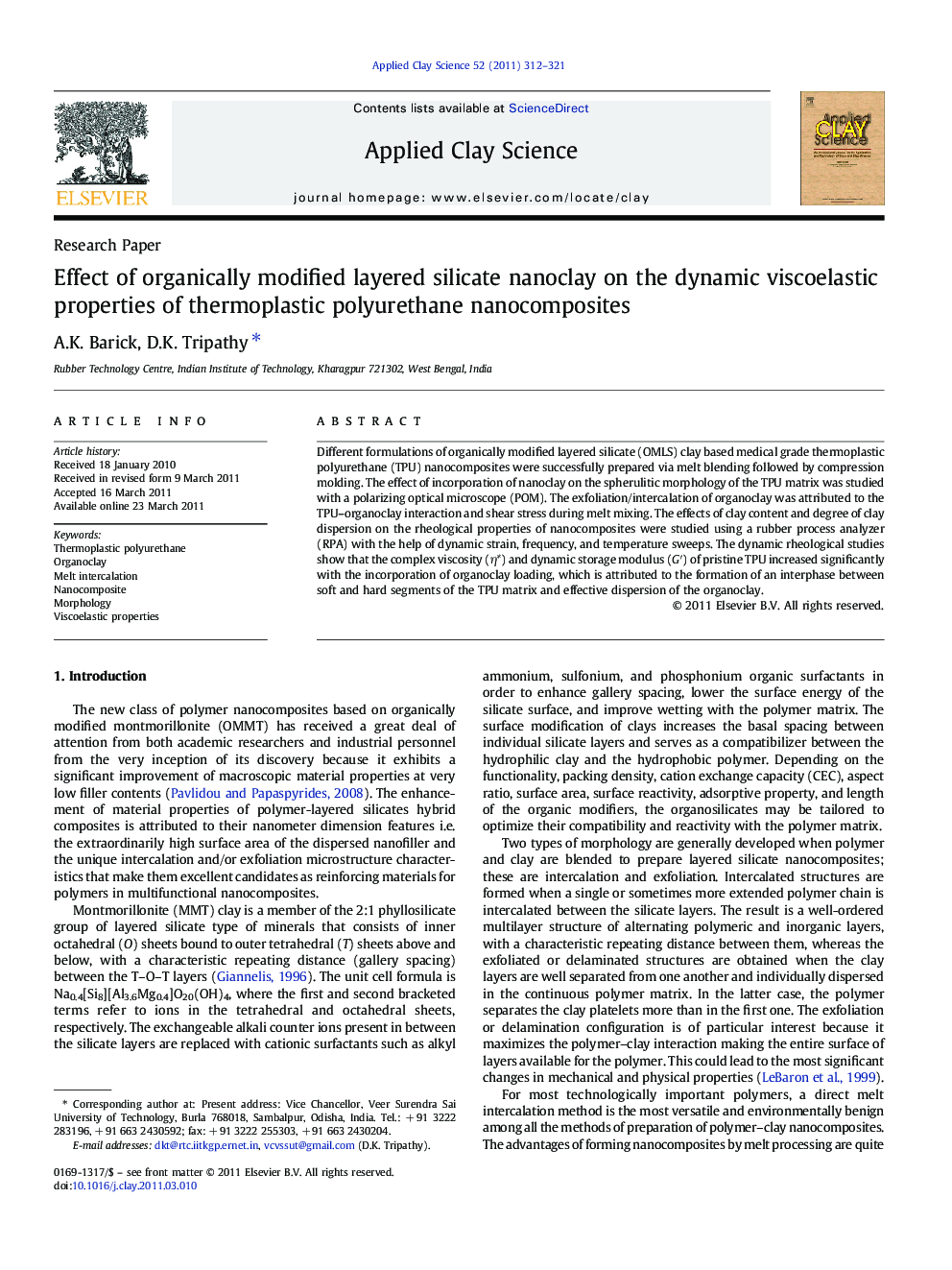| Article ID | Journal | Published Year | Pages | File Type |
|---|---|---|---|---|
| 1695513 | Applied Clay Science | 2011 | 10 Pages |
Different formulations of organically modified layered silicate (OMLS) clay based medical grade thermoplastic polyurethane (TPU) nanocomposites were successfully prepared via melt blending followed by compression molding. The effect of incorporation of nanoclay on the spherulitic morphology of the TPU matrix was studied with a polarizing optical microscope (POM). The exfoliation/intercalation of organoclay was attributed to the TPU–organoclay interaction and shear stress during melt mixing. The effects of clay content and degree of clay dispersion on the rheological properties of nanocomposites were studied using a rubber process analyzer (RPA) with the help of dynamic strain, frequency, and temperature sweeps. The dynamic rheological studies show that the complex viscosity (η*) and dynamic storage modulus (G′) of pristine TPU increased significantly with the incorporation of organoclay loading, which is attributed to the formation of an interphase between soft and hard segments of the TPU matrix and effective dispersion of the organoclay.
Graphical abstractFigure optionsDownload full-size imageDownload as PowerPoint slideResearch highlights► Preparation and characterization of TPU nanocomposites for biomedical applications. ► The rheological properties of nanocomposites were extensively studied by using RPA. ► Effects of applied strain, frequency, and temperature on rheology were carried out. ► The rheological percolation threshold was determined from the Kerner–Nielson model. ► Microstructural changes were examined by Han, Cole–Cole, and van Gurp–Palmen plots.
